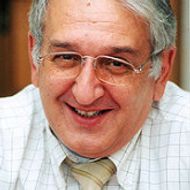- A
- A
- A
- ABC
- ABC
- ABC
- А
- А
- А
- А
- А
- HSE University
- Faculty of Economic Sciences
- Department of Mathematics
- News
- HSE Seminar on Political Economy: Anastasia Burkovskaya (University of Sydney) about Electoral Model and Ballot Stuffing
-
The Department
109028, Moscow, Pokrovsky Boulevard 11, T423
Phone: +7 (495) 621 13 42,
+ 7(495) 772 95 90 *27200; *27212.
Email: dhm-econ@hse.ru; shatskaya@hse.ru

 New Centrality Measures in Networks: How to Take into Account the Parameters of the Nodes and Group Influence of Nodes to Nodes
New Centrality Measures in Networks: How to Take into Account the Parameters of the Nodes and Group Influence of Nodes to Nodes
Aleskerov F. T., Shvydun S., Meshcheryakova N.
CRC Press, 2022.
Belenky A., Fedin G., Kornhauser A.
International Journal of Public Administration. 2021. Vol. 44. No. 13. P. 1076-1089.
In bk.: AIP Conference Proceedings. Vol. 2328: ICMM-2020. AIP Publishing LLC, 2021. Ch. 060001. P. 060001-1-060001-4.
Zlotnik A., Kireeva O.
math. arXiv. Cornell University, 2020. No. arXiv:2011.14104v2[math.NA].
109028, Moscow, Pokrovsky Boulevard 11, T423
Phone: +7 (495) 621 13 42,
+ 7(495) 772 95 90 *27200; *27212.
Email: dhm-econ@hse.ru; shatskaya@hse.ru


HSE Seminar on Political Economy: Anastasia Burkovskaya (University of Sydney) about Electoral Model and Ballot Stuffing
Topic: Identification of Electoral Model and Ballot Stuffing
Abstract:
This paper introduces a model of electoral choice that allows for derivation of joint distribution of turnout and voter share from unobservable joint distribution of costs of voting and preferences over candidates. Under a set of mild assumptions, we show non-parametric identification of joint distribution of costs of voting and preferences over candidates from observable data on single elections/referendum. We also offer an extension of the model that helps to identify ballot stuffing type of electoral fraud. In addition, we offer an empirical illustration of the model estimation using 2011 Russian parliamentary election data.
the seminar of Higher School of Economics on political economy was held on June 29.
Moderators: Alexei Zakharov (HSE), Konstantin Sonin (HSE, The University of Chicago Harris School of Public Policy)
- About
- About
- Key Figures & Facts
- Sustainability at HSE University
- Faculties & Departments
- International Partnerships
- Faculty & Staff
- HSE Buildings
- Public Enquiries
- Studies
- Admissions
- Programme Catalogue
- Undergraduate
- Graduate
- Exchange Programmes
- Summer Schools
- Semester in Moscow
- Business Internship
-
https://elearning.hse.ru/en/mooc/
Massive Open Online Courses
-
https://www.hse.ru/en/visual/
HSE Site for the Visually Impaired
-
http://5top100.com/
Russian Academic Excellence Project 5-100
- © HSE University 1993–2025 Contacts Copyright Privacy Policy Site Map
- Edit

